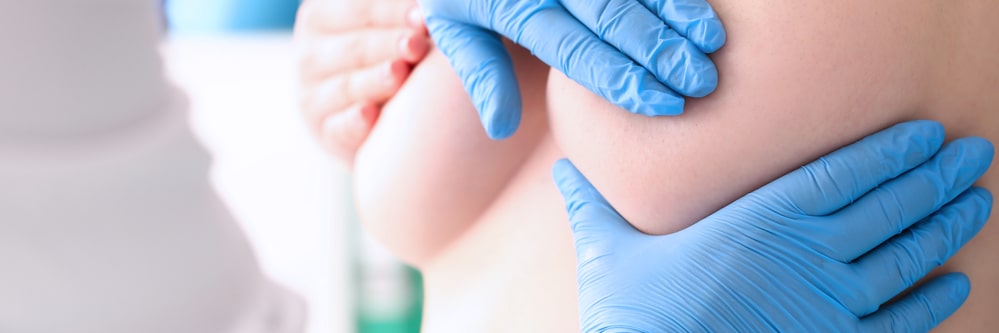
For many, getting a breast augmentation with implants is the cosmetic surgery procedure they enthusiastically get done. It’s no reason why it’s still the top five procedures in North America, according to the American Society of Plastic Surgeons.
But for some, the enthusiasm about their breast enhancement has started to fade and turn into concerns about their breast implant illness symptoms.
Celebrities such as Clare Crawley from the Bachelorette and Ashley Tisdale have chosen to remove their breast implants due to health-related issues. With more stars bringing awareness to the symptoms of breast implant sickness on social media, it has made the concerns of this illness more common to talk about.
There has even been an increase of breast implants removal procedures by 34\\%, reported by The Aesthetic Society.
So with all these health concerns related to breast implant illness and more reports of women removing their breast implants, it’s important to know the symptoms and signs. And what are your options for breast implant removal or other alternatives for an augmentation?
We will cover the signs and symptoms of breast implant illness in this article. Let’s start from the beginning.
Breast implant illness (also known as BII) is a condition related to symptoms developed after a breast implant augmentation or reconstructive surgery from breast cancer. A patient can develop breast implant illness immediately after the surgery or years later. There is an extensive list of symptoms caused by BII, and most are associated with autoimmune and connective tissue disorders, which is why BII can also be referred to as autoimmune/inflammatory syndrome induced by adjuvants (ASIA).
Since the most obvious symptoms with BII are similar or could be related to an autoimmune condition such as rheumatoid arthritis, lupus, or ulcerative colitis, it is not recognized as an official medical diagnosis. This can make it difficult to formulate data and research on this illness related to breast augmentations.
Breast implant sickness can develop post-surgery immediately or could take years for the symptoms to develop. And BII can occur with any breast implant material or shape; this includes silicone gel-filled, saline-filled, smooth surface, textured surface, round, or teardrop-shaped.
The symptoms related to breast implant illness can vary from patient to patient, and the effects of the symptoms can range from mild to severe. And the types of symptoms may not seem like a direct link to breast implant sickness, but if conditions continue to appear, it would be best to consult with a board-certified doctor.
BII has also been known to cause a change in mental health, causing some patients to notice an imbalance of hormones, bouts of anxiety, and depression.
Given that there is not yet an official diagnostic test for breast implant illness, you may need to take a series of tests for autoimmune disorders like Lyme disease to help rule out the not implant-related symptoms.
It is recommended to seek a consultation with a board-certified plastic surgeon to discuss the process of implant removal.
In most cases, removing the implants can help resolve or improve the symptoms of breast implant illness. There are two types of surgeries recommended by plastic surgeons.
“En bloc” means whole or all together in French. And in terms of a medical procedure, “en bloc capsulectomy” removes the implant and scar tissue all at once. The scar tissue that forms around the breast implant is referred to as the capsule. The benefit of removing the capsule is to prevent pieces of the implant material from moving to different parts of the body.
A total capsulectomy has the same end goal of removing the implant and capsule, like the “en bloc capsulectomy”; however, it is a two-step process. A total capsulectomy starts by removing the implant first, then removing all scar tissue at a deeper surface level.
It is always best to consult with different plastic surgeons who have a background and experience in removing breast implants. You can never assume the same doctor that did your breast augmentation procedure would be the same person to remove your implants.
To find a board-certified plastic surgeon experienced with breast augmentation surgery in your area, take a look at our “Find a Doctor” navigation tool.
There are alternatives for breast enhancement without the need for an implant or surgery. Here are two options to consider:
Breast fat grafting is performed through a liposuction procedure. Liposuction is when excess fat is removed from different body parts (waistline inner thighs or parts of the back) by making a small incision and harvesting the fat and cells. Once the fat is harvested and processed, it is reinjected into the breast area. The initial injection creates a subtle difference in breast volume. However, the harvesting of the fat and the vital cells helps generate the growth of new fat cells to develop over nine to twelve weeks naturally.
The results of breast fat grafting don’t provide a patient with a significant amount of volume or an overall lift but an ideal procedure for someone looking for a slight difference in breast size without inserting an implant.
Macrolane is a gel-filler injection that is specially formulated with hyaluronic acid. The filler instantly creates volume from the gel. The hyaluronic acid formulation stimulates the production of the body’s natural form of hyaluronic acid, which is the vital makeup for the structure of muscles and skin. Macrolane injections last for about a year, and the body naturally absorbs the formulation. The benefit of this breast enhancement is its noninvasive technique, an ideal procedure to avoid implant surgery.
Before deciding on breast augmentation or a breast removal procedure, properly interview and consult with a board-certified plastic surgeon.
Ask questions about the procedure:
If you are concerned that you may have symptoms related to breast implant illness, check with your doctor or ask a question to one of our board-certified plastic surgeons.
- VM